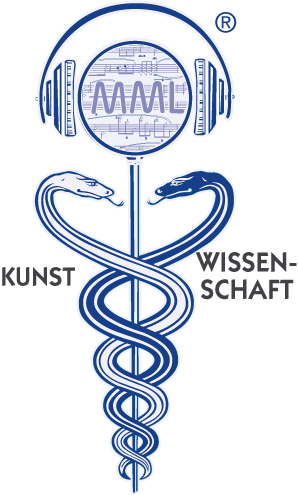| INTERNATIONAL PHILHARMONY FOUNDATION | ||
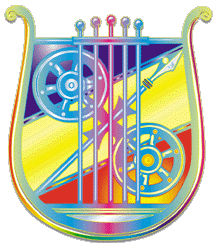 |
GERMAN ACADEMY OF SCIENCES & ARTS GERMAN ACADEMY OF SCIENCES GERMAN CULTURAL SENATE GERMAN CULTURAL FOUNDATION |
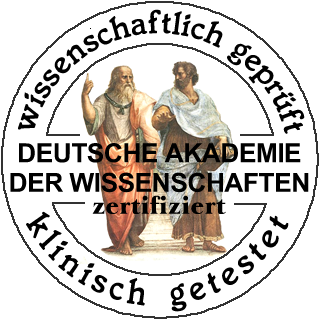 |
| ETHIC PROGRAMS | ||
PETER HÜBNER
COSMIC SYMPHONIES & HYMNS
| Cosmic Musical Training of the SuperNatural Human Forces through the Scientific Application and Artistic Utilization of the Cosmic Harmony Laws of the MicroUniverse of Music |
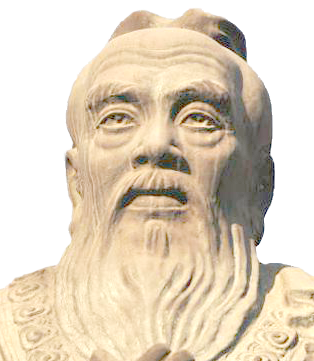 
“Do cause
the harmony of the center: self-awareness, and heaven and earth come to their right place and all things prosper.” Confucius Composer, Musician, Philosopher
This was the authentic music practice of the “harmony of the center”, practiced by Confucius:
A cosmic training of man’s supernatural powers through the scientific application and artistic utilisation of the harmony laws of the microcosm of music.
The 4 pillars of classical music:
With the help of these pillars the classical composer and competent music interpreter creates in the microcosm of music and out of the microcosm of music the micro-universe of classical music:
Today, the objective verification of authentic classical music is possible: through measurements in the field of modern scientific medicine.
“Therefore the wise creates a music,
which corresponds to cosmic harmony, and an upbringing and education, which is appropriate to the cosmic dignity of man.” Confucius Composer, Musicologist, Philosopher
Such was the authentic “upbringing and education which is appropriate to the cosmic dignity of man”, practiced by Confucius:
A cosmic training of man’s supernatural powers through the scientific application and artistic utilisation of the harmony laws of the microcosm of music.
The 4 pillars of classical music:
With the help of these pillars the classical composer and competent music interpreter creates in the microcosm of music and out of the microcosm of music the micro-universe of classical music:
Today, it is possible to objectively verify authentic classical music: through measurements in the field of modern scientific medicine. 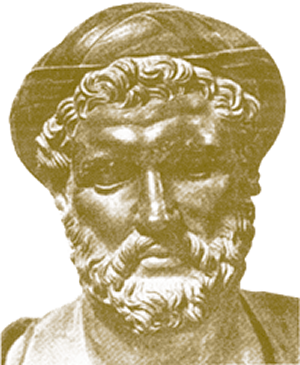
After 24 years of training in the 7 high arts by the high priests in the Egyptian temple sites and after 12 more years of relevant academic learning from the great sages of Babylon, Pythagoras discovered on his return to his native Greece, that the mysteries there were degenerating through wild sacrificial cults and boistering music and it was quite clear to him that the reform had to begin here, in this area, which had such a deep influence on mind and soul.
Therefore his most attentive care was devoted to a music structured by the cosmic laws of harmony – by raising music to become subject of theoretical scientific study and by practically playing it. What did the scientific study and the practical music reform conceived by Pythagoras look like?: It was a cosmic training of man's supernatural powers through the scientific application and artistic utilization of the harmony laws of the microcosm of music, based on the four pillars of classical music.
The 4 pillars of classical music:
With the help of these pillars the classical composer and competent music interpreter creates in the microcosm of music and out of the microcosm of music the micro-universe of classical music:
Today, it is possible to objectively verify authentic classical music: through measurements in the field of modern scientific medicine. 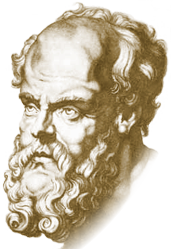
“Music has
a more powerful potential to educate than any other educational medium, because harmony and rhythm of naturally structured music find their way into the deepest depths of the soul and unfold its natural beauty and dignity.” Socrates
How we, today, can do justice to the purpose of music from the point of view of the great education expert Socrates:
With the help of a cosmic training of man's supernatural powers through the scientific application and artistic utilization of the harmony laws of the microcosm of music, based on the four pillars of classical music. The 4 pillars of classical music:
With the help of these pillars the classical composer and competent music interpreter creates in the microcosm of music and out of the microcosm of music the micro-universe of classical music. Today, the objective verification of authentic classical music is possible: through measurements in the field of modern scientific medicine. 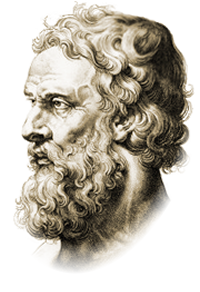
“He is a musician,
who, progressing from the sensually perceived tones, reaches with his intellect the non-sensual harmonies and their natural proportions.” Platon
How today’s musician, “progressing from the sensually perceived tones”, may “reach with his intellect the non-sensual harmonies and their natural proportions”:
With the help of a cosmic training of man’s supernatural powers through the scientific application and artistic utilization of the harmony laws of the microcosm of music, based on the four pillars of classical music.
The 4 pillars of classical music:
With the help of these pillars the classical composer and competent music interpreter creates in the microcosm of music and out of the microcosm of music the micro-universe of classical music. For today’s musician and/or music interpreter it is possible, scientifically verifiable, “progressing from the sensually perceived tones” to “reach with his intellect the non-sensual harmonies and their natural proportions” and furthermore, that this is possible, according to scientific proof, for the listener as well – even for the musically completely uneducated listener. Thus the objective verification of authentic classical music is possible: through measurements in the modern field of scientific medicine. 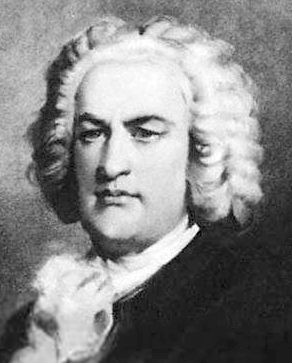
“... but nothing must be found,
that could be unfavourable to the musical melodiousness or to the completely right, unambiguous presentation of the inner meaning, for the sake of which all purity of harmony is searched.” Johann Sebastian Bach
How today’s musician can “reach with his intellect, progressing from the sensually perceived tones, the unsensual harmonies and their natural proportions”:
With the help of a cosmic training of man’s supernatural powers through the scientific application and artistic utilisation of the harmony laws of the microcosm of music, based on the four pillars of classical music. The 4 pillars of classical music:
With the help of these pillars the classical composer and competent music interpreter creates in the microcosm of music and out of the microcosm of music the micro-universe of classical music. For today’s musician and/or music interpreter it is possible, scientifically verifiable, to “reach with his intellect, progressing from the sensually perceived tones, the non-sensual harmonies of the Creator and their natural proportions”. This ensures that the listener is faced with nothing “that could be unfavourable to the musical melodiousness or to the completely right, unambiguous presentation of the inner meaning, for the sake of which all purity of harmony is searched”. This musical and artistic achievement is now detectable by the means of modern scientific medicine – down to the listener, even down to the completely musically uneducated. Thus, the objective verification of authentic classical music – the “musical melodiousness” of the laws of harmony or the “completely right, unambiguous presentation of the inner meaning, for the sake of which all purity of harmony is searched” – is possible: Through measurements in the field of modern scientific medicine.
“Like of all music
also the purpose and final cause of the basso continuo shall be for nothing other but for God’s glory and for the recreation of the heart: Where this is not taken into account, there it is no actual music, but a devilish bawling.” Johann Sebastian Bach
How today’s musician, “progressing from the sensually perceived tones, can reach with his intellect the non-sensual harmonies and their natural proportions”:
With the help of a cosmic training of man’s supernatural powers through the scientific application and artistic utilisation of the harmony laws of the microcosm of music, based on the four pillars of classical music. The 4 pillars of classical music:
With the help of these pillars the classical composer and competent music interpreter creates in the microcosm of music and out of the microcosm of music the micro-universe of classical music. For today’s musician and/or music interpreter it is possible, scientifically verifiable, to “reach with his intellect, progressing from the sensually perceived tones, the non-sensual harmonies of the Creator and their natural proportions”. This ensures that the listener is faced with nothing “that could be unfavourable to the musical melodiousness or to the completely right, unambiguous presentation of the inner meaning, for the sake of which all purity of harmony is searched”. This musical and artistic achievement is now detectable by the means of modern scientific medicine – down to the listener, even down to the completely musically uneducated. Thus, the objective verification of authentic classical music – the “musical melodiousness” of the laws of harmony or the “completely right, unambiguous presentation of the inner meaning, for the sake of which all purity of harmony is searched” – is possible: Through measurements in the field of modern scientific medicine. 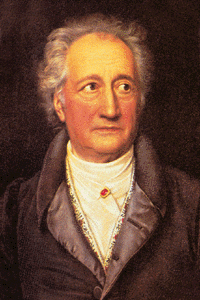
“Through the temple of music
we find our way into divinity. Here we experience our true resurrecting.” Goethe
When today’s musician learns, “to reach with his intellect, progressing from the sensually perceived tones, the non-sensual harmonies and their natural proportions”, that is, when he learns to be based upon the 4 pillars of classical music, by the help of a purely musical cosmic training of man’s supernatural powers through the scientific application and artistic utilisation of the harmony laws of the microcosm of music, then, with the help of revelation, he “finds his way into divinity” and experiences here his “true resurrection”.
The 4 pillars of classical music:
With the help of these pillars the classical composer and competent music interpreter creates in the microcosm of music and out of the microcosm of music the micro-universe of classical music. For today’s musician and/or music interpreter it is possible, scientifically verfiable, to “reach with his intellect, progressing from the sensually perceived tones, the non-sensual harmonies of the Creator and their natural proportions”. This ensures that the listener is faced with nothing “that could be unfavourable to the musical melodiousness or to the completely right, unambiguous presentation of the inner meaning, for the sake of which all purity of harmony is searched.” This musical and artistic achievement deep within the innermost core of the “temple of music” is now detectable by the means of modern scientific medicine – down to the listener, even down to the completely musically uneducated. Thus, it is possible to objectively verify the cosmic function of the “temple of music”: of authentic classical music – the “musical melodiousness” of the harmony laws or the “completely right, unambiguous presentation of the inner meaning, for the sake of which all purity of harmony is searched”: through measurements in the field of modern scientific medicine. 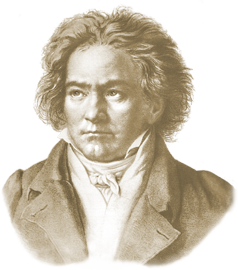
“I must despise a world,
which has no idea that music is a greater revelation than all wisdom and philosophy.” Beethoven
When today’s musician learns, “to reach with his intellect, progressing from the sensually perceived tones, the non-sensual harmonies and their natural proportions”, that is, when he learns to be based upon the 4 pillars of classical music, by the help of a purely musical cosmic training of man’s supernatural powers through the scientific application and artistic utilisation of the harmony laws of the microcosm of music, then, with the help of revelation, he “finds his way into divinity” and experiences here – beyond all academic „wisdom and philosophy“ his “true resurrection”.
The 4 pillars of classical music:
With the help of these pillars the classical composer and competent music interpreter creates in the microcosm of music and out of the microcosm of music the micro-universe of classical music. For today’s musician and/or music interpreter it is possible, scientifically verifiable, to “reach with his intellect, progressing from the sensually perceived tones, the non-sensual harmonies of the Creator and their natural proportions.” This ensures that the listener is faced with nothing “that could be unfavourable to the musical melodiousness or to the completely right, unambiguous presentation of the inner meaning, for the sake of which all purity of harmony is searched.” This musical and artistic achievement deep within the innermost core of the “temple of music” is now detectable by the means of modern scientific medicine – down to the listener, even down to the completely musically uneducated. Thus, it is possible to objectively verify the cosmic function of the “temple of music”: the revelation of authentic classical music – the “musical melodiousness” of the laws of harmony or the “completely right, unambiguous presentation of the inner meaning, for the sake of which all purity of harmony is searched”: through measurements in the field of modern scientific medicine.
“Music gives the mind
the relation to harmony.” Beethoven
When today’s musician learns, “to reach with his intellect, progressing from the sensually perceived tones, the non-sensual harmonies and their natural proportions”, that is, when he learns to be based upon the 4 pillars of classical music, by the help of a purely musical cosmic training of man’s supernatural powers through the scientific application and artistic utilisation of the harmony laws of the microcosm of music, then, with the help of revelation, he “finds his way into divinity”. Here the mind finds - beyond all academic „wisdom and philosophy“ – the “relation to harmony” and the musician finds his “true resurrection” and with him: his listeners.
The 4 pillars of classical music:
With the help of these pillars the classical composer and competent music interpreter creates in the microcosm of music and out of the microcosm of music the micro-universe of classical music. For today’s musician and/or music interpreter it is possible, scientifically verifiable, to “reach with his intellect, progressing from the sensually perceived tones, the non-sensual harmonies of the Creator and their natural proportions.” This ensures that the listener is faced with nothing “that could be unfavourable to the musical melodiousness or to the completely right, unambiguous presentation of the inner meaning, for the sake of which all purity of harmony is searched.” This musical and artistic achievement deep within the innermost core of the “temple of music” is now detectable by the means of modern scientific medicine – down to the listener, even down to the completely musically uneducated. Thus, it is possible to objectively verify the cosmic function of the “temple of music”: the revelation of authentic classical music – the “musical melodiousness” of the laws of harmony or the “completely right, unambiguous presentation of the inner meaning, for the sake of which all purity of harmony is searched”: through measurements in the field of modern scientific medicine.
The specific scientific and artistic application of the harmony laws of the microcosm of music has proven in many ways that these cosmic laws which govern the entire universe – from the movement of the stars to the functions of the biological systems – can do wonders, particularly in health and education.
So far such miracles could not be achieved with the musical performances and music productions in our time and could not be scientifically proven: not be objectively verified by means of measurements. Beethoven finds very clear, critical words which explain the matter from his high perspective:
“Just like thousands
get married out of love, and this love reveals itself not even once in these thousands, although they all pursue the craft of love, so thousands carry on with music, but do not find its revelation.” Beethoven
According to the classical composer & musicologist Peter Hübner the reason for this lies in the STRESS load of today’s classical music interpreters: the consequences of this STRESS do not allow the musical achievements demanded by Confucius, Socrates, Platon, Bach and Beethoven as well as by all the great classical composers, philosophers and prophets.
The recordings in the Micro Music Laboratories® which obviously do not have this STRESS load, could and can meet the stated requirements by objective science and can basically prove that the course of turning to the laws of harmony, taken by the great classical composers, is the right way – if music is supposed to help people live a higher quality of life. Peter Hübner continues to follow this path, mapped out by our great classical composers, with scientific precision and artistic thoroughness and in the tenor of the great classical composers. But due to the existing destructive potential from the usual STRESS-load of the musicians and music interpreters he so far abstained from their active participation to guarantee the musical success, demanded by Confucius, Socrates, Platon, Bach and Beethoven but also by all the great classical composers, philosophers and prophets. But he has created a scientific and artistic training programme for professional musicians and music interpreters in order to ensure there as well the fulfilment of the concerns previously demanded by the great thinkers. This programme is to be used worldwide as part of a project – that bears the name of Beethoven – to help fulfil the targeted high musical duties faithfully. For the future the creator of this integrated scientific and artistic training program for the professional musicians and music interpreters makes some important demands on the classical music scene: “The classical music performances and productions of the future must at least comply with the following conditions – by objective standards and according to the current state of scientific knowledge: 1. In regard to classical music the musicians and music interpreters have
“to submit (themselves) to its unfathomable laws”
Beethoven
in a way that is verifiable by objective science
that is: to submit themselves to the inaudible harmony laws which are given by creation and govern the entire universe.
2. In a way that is verifiable by objective science the musicians and performers of classical music have
“by virtue of these laws
to be able to tame and direct the own mind, so that it pours out art’s revelations” Beethoven
For today’s musician and/or music interpreter it is possible – verifiable by science – “to reach with his intellect, progressing from the sensually perceiving tones, the non-sensual harmonies and their natural proportions.”
This ensures that the listener is faced with nothing “that could be unfavourable to the musical melodiousness or to the completely right, unambiguous presentation of the inner meaning, for the sake of which all purity of harmony is searched.” This musical and artistic achievement deep within the innermost core of the “temple of music” is now verifiable by the means of modern scientific medicine – down to the listener, even down to the completely musically uneducated. Thus, it is possible to objectively verify the cosmic function of the “temple of music”: the revelation of authentic classical music – the “musical melodiousness” of the laws of harmony or the “completely right, unambiguous presentation of the inner meaning, for the sake of which all purity of harmony is searched”: through measurements in the field of modern scientific medicine.
“That is the isolating principle of art;
to be dissolved by its revelation, that is devotion to the Divine, which quietly practises its domination on the rage of untamed powers, and so makes imagination most effective.” Beethoven
When the world of classical music learns to see music as a “gift of God” and to honour the art of the great prophets of music as revelations of the Creator:
When its maestros and priests were willing to exercise themselves unselfishly and truthfully in music, and, based on the 4 pillars of classical music, to open up to the completely non-ideological, non-sensational, scientific, cosmic training of man’s supernatural powers through the scientific application and artistic utilisation of the harmony laws of the microcosm of music then soon, with this “gift of God”, the whole music scene would be put in a position to observe the cosmic harmony laws of the Creator and use music “for nothing other than for God’s glory and the recreation of the heart” – at least not for providing their neighbour with “false witness” or to market and publicly distribute “no actual music, but a devilish bawling.”
“Thus, art
always represents Divinity, and man’s relation to it, is religion.” Beethoven
When today’s classical music world – from the religious perspective of a Martin Luther – recognises music as a “gift from God”:
When it opens up to the completely non-ideological, scientific, cosmic training of man’s supernatural powers through the scientific application and artistic utilisation of the harmony laws of the microcosm of music, based on the four pillars of classical music, and when it lets the heart of its members overflow with gratitude towards music, which refreshes them and saves them from great desperation, then it causes by this the “harmony of the center”: “self-awareness, and heaven and earth come to their right place and all things prosper”.
“That which we acquire from art
is from God, divine inspiration, which sets human abilities a target that he achieves.” Beethoven
Today it is possible to objectively verify authentic classical music – that “art of the prophets”, the only art, which can soothe the turmoil in the soul – as the product of higher revelation: as a “gift of God”:
through measurements in the field of modern scientific medicine.
“... and although the mind
is not in control over that which he creates through it, he is nevertheless blissfully happy in this creation, and so every true creation of art is independent, more powerful than the artist himself, and through its appearance returns to the divine, and is only connected with man in so far as that it bears witness of the conveyance of the divine in him.” “Music is the only non-personified access to a higher world of knowledge, which does indeed encompass man, but which he is not able to grasp.” Beethoven  
The so far gained scientific findings were only gained by bringing about that phenomenon of achieving integration of the inner human forces within, something the great classical composers call “revelation” – that intra-human phenomenon, from which, according to all the great classical composers, the true music springs, and out of the targeted scientific and artistic, consistent use of the – by their very nature – inaudible harmony laws of the microcosm of music without all STRESS.
For over 20 years already, well-known orchestras and music interpreters have been interested in recordings in Dynamic Space Stereophony® – but Peter Hübner saw and sees no point in a premature commitment in this direction as long as on their side the internal conditions for the revelation and its many positive, miraculous consequences in medicine and education are not met. In the large context of the BEETHOVEN PROJECT, the previous recordings from the CLASSICAL MUSIC LABORATORIES® – a division of the MICRO MUSIC LABORATORIES® – can already provide very good service here, from the very beginning, in the fight against the STRESS problems of the musicians and music interpreters, because: 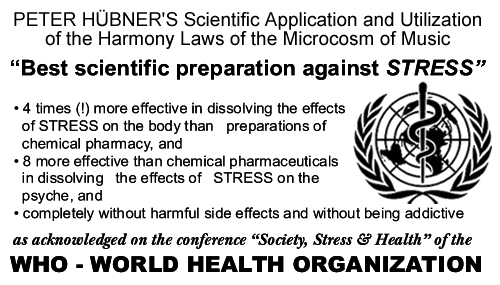 
With the help of the modern investigation methods of scientific medicine, it has been proven in many ways, that music, which is structured in a scientific manner according to the harmony laws of the microcosm of music, can bring about the described results demanded by the above mentioned great classical composers, philosophers, thinkers and prophets.
And correspondingly it has been and/or can be easily demonstrated regarding individual music productions that the former or also current professional classical music scene does not bring about these achievements as demanded by the above mentioned great classical composers, philosophers, thinkers and prophets. Main reasons:
To remedy this, the classical composer and musicologist Peter Hübner created and organised the so-called BEETHOVEN PROJECT for training competent music interpreters and competent scientific music therapists and music physicians.
BASIC LAW OF CLASSICAL MUSIC
Scientific Application and Artistic Utilisation of the Cosmic Harmony Laws of the Micro-Universe of Music |
|||||||||
 COSMIC CREATIVITY COSMIC CREATIVITY COSMIC ALERTNESS COSMIC ALERTNESS COSMIC ART COSMIC ART COSMIC ASTRONOMY COSMIC ASTRONOMY COSMIC AUTUMN COSMIC AUTUMN CONSCIOUSNESS 4 CONSCIOUSNESS 4 COSMIC BREATH COSMIC BREATH COSMIC CAUSALITY COSMIC CAUSALITY COSMIC COMPLEXITY COSMIC COMPLEXITY CONSCIOUSNESS 5 CONSCIOUSNESS 5 COSMIC CULTURE COSMIC CULTURE COSMIC CURE OF SOULS COSMIC CURE OF SOULS COSMIC DANCE COSMIC DANCE COSMIC DIGNITY COSMIC DIGNITY COSMIC DRAGON COSMIC DRAGON COSMIC DYNAMICS COSMIC DYNAMICS COSMIC EARTH COSMIC EARTH COSMIC EDUCATION COSMIC EDUCATION COSMIC ENERGY COSMIC ENERGY COSMIC EVOLUTION COSMIC EVOLUTION COSMIC FAIRY TALE COSMIC FAIRY TALE COSMIC FIRE COSMIC FIRE COSMIC FORCE OF LIFE COSMIC FORCE OF LIFE COSMIC FOUNTAIN COSMIC FOUNTAIN COSMIC FREE WILL COSMIC FREE WILL COSMIC FREEDOM COSMIC FREEDOM COSMIC FUTURE COSMIC FUTURE CONSCIOUSNESS 6 CONSCIOUSNESS 6 COSMIC HAPPINESS OF LIFE COSMIC HAPPINESS OF LIFE COSMIC HARMONY COSMIC HARMONY COSMIC HEALTH COSMIC HEALTH COSMIC HUMANITIES COSMIC HUMANITIES COSMIC INSIGHT COSMIC INSIGHT COSMIC INSPIRATION COSMIC INSPIRATION COSMIC INTEGRATION COSMIC INTEGRATION COSMIC INTELLIGENCE COSMIC INTELLIGENCE COSMIC INTUITION COSMIC INTUITION COSMIC JOY OF LIFE COSMIC JOY OF LIFE COSMIC LIFE COSMIC LIFE COSMIC LIFE HARMONY COSMIC LIFE HARMONY COSMIC LIGHT COSMIC LIGHT COSMIC LINGUISTICS COSMIC LINGUISTICS COSMIC LOGIC COSMIC LOGIC COSMIC MATHEMATICS COSMIC MATHEMATICS COSMIC MEDICINE COSMIC MEDICINE COSMIC MEDITATION COSMIC MEDITATION COSMIC MICROCOSM COSMIC MICROCOSM COSMIC MOON COSMIC MOON COSMIC MYTHS COSMIC MYTHS COSMIC NATURALNESS COSMIC NATURALNESS COSMIC ORCHESTRAS COSMIC ORCHESTRAS COSMIC ORDER COSMIC ORDER COSMIC PATH COSMIC PATH COSMIC PEACE COSMIC PEACE COSMIC PHANTASY COSMIC PHANTASY COSMIC PHARMA COSMIC PHARMA COSMIC PHILOSOPHY COSMIC PHILOSOPHY COSMIC PHYSICS COSMIC PHYSICS COSMIC PLANETS COSMIC PLANETS COSMIC RELIGION COSMIC RELIGION COSMIC RESPONSIBILITY COSMIC RESPONSIBILITY COSMIC SCIENCE COSMIC SCIENCE COSMIC SELF COSMIC SELF COSMIC SOUL COSMIC SOUL COSMIC SPACE COSMIC SPACE COSMIC SPRING COSMIC SPRING COSMIC STARS COSMIC STARS COSMIC STREAM COSMIC STREAM COSMIC STRENGTH COSMIC STRENGTH COSMIC SUMMER COSMIC SUMMER COSMIC SUN COSMIC SUN COSMIC SYSTEMATICS COSMIC SYSTEMATICS COSMIC THINKING COSMIC THINKING CONSCIOUSNESS 7 CONSCIOUSNESS 7 COSMIC TRUTH COSMIC TRUTH CONSCIOUSNESS 8 CONSCIOUSNESS 8 COSMIC VEDA COSMIC VEDA COSMIC WATER COSMIC WATER COSMIC WIND COSMIC WIND COSMIC WINTER COSMIC WINTER COSMIC WISDOM COSMIC WISDOM COSMIC WORLD COSMIC WORLD COSMIC YOGA COSMIC YOGA |




A Micro Music Laboratories Production
Digital Studio Recordings Under the Direction of the Classical Composer and Musicologist Peter Hübner.
© Aar Edition International 1999 • ℗ United Productions International 1999
All rights of the manufacturer and of the owner of the recorded work reserved.
Unauthorized public performance, broadcasting and lending is prohibited, as well as copying of this recording
other than for your sole personal noncommercial medical or educational use.
